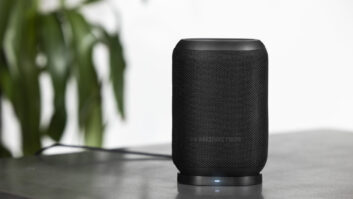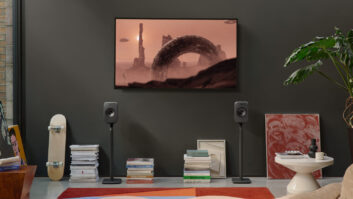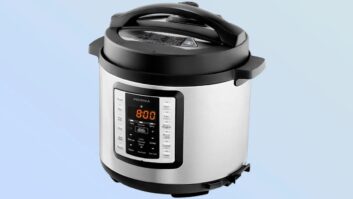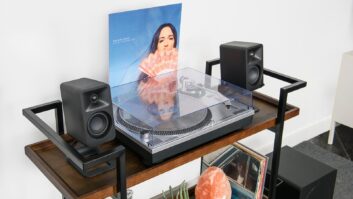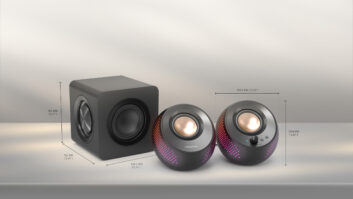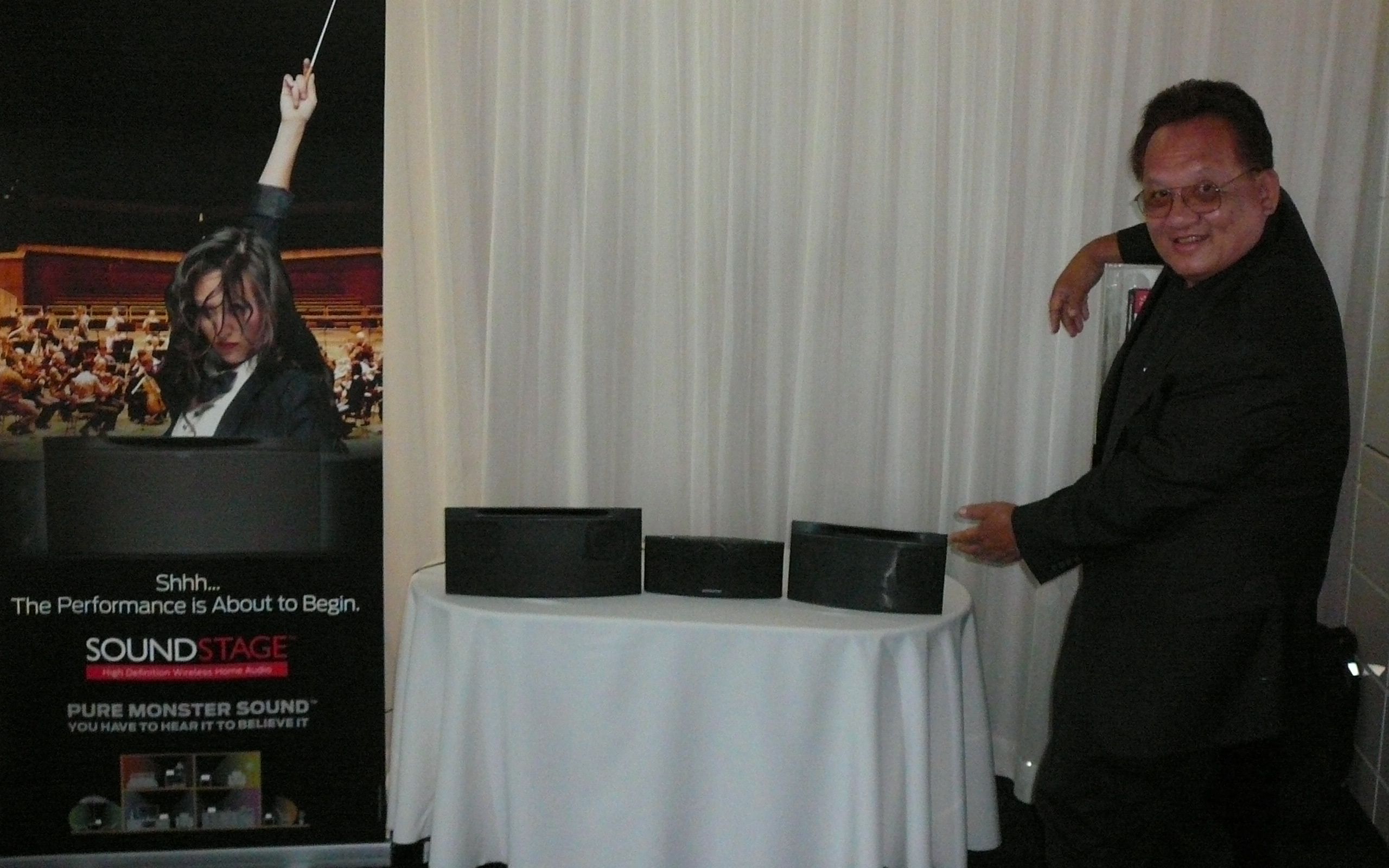
New York – Monster will join with Best Buy to launch the first wireless multiroom-audio speakers in the U.S. to incorporate Qualcomm’s AllPlay technology.
In the U.S., 400 Best Buy stores and the retailer’s Canadian stores will carry Monster’s three Soundstage speakers beginning the last week of October. The speakers will be rolled out to other retailers about 30 days later.
Monster also announced a replacement for its high-end $279-MAP DNA over-ear headphones, which will ship to a limited number of A/V specialists in November. The 2.0 model is positioned as “super-efficient” and “super-sensitive” in order to deliver the dynamic range of a live performance without the use of a headphone amp.
Monster’s previously announced AC-only Wi-Fi speakers, which also feature Bluetooth and NFC, will be backed by an aggressive social media and public relations campaign and will probably include some Best Buy TV spots, promotion in weekly Best Buy circulars, and online advertising in partnership with Monster, said Vern Smith, director of business development.
The launch will also include a 48-inch-wide, 28-inch-tall demonstrator that features working models of all three speakers, plus a touchpad to select a speaker and play back a product explanation and music samples. The display, which can sit on top of 4-foot-tall shelves containing boxed products, will also be available to other retailers.
In stores, a product evangelist will also be available to train other salespeople and take customers over to a speaker through which they can play their own music via Bluetooth.
AllPlay is a technology developed and licensed by Qualcomm to send high-resolution audio around the house via Wi-Fi to active tabletop speakers and stereo systems. It’s positioned as an alternative to proprietary single-brand wireless multizone-audio solutions, enabling consumers to create wireless multiroom-audio systems from multiple brands of products.
Monster will be the first to market AllPlay speakers in the U.S. Altec Lansing plans U.S. sales probably in the first quarter, and Panasonic still plans U.S. availability of its models at an undisclosed time following a product launch in Europe, said Gary Brotman, product management director for Qualcomm’s connected experience group.
In Europe, one other company, Medion, also offers AllPlay speakers. That company will be followed this month by Lenco and in the fourth quarter by Musaic, Brotman said.
AllPlay delivers up to 10 zones of wireless multizone audio over dual-band Wi-Fi 802.11 with 2×2 MIMO. Up to 10 songs at a time can be streamed direct from an Apple or Android mobile device or from a DLNA-enabled computer or NAS drive. The devices’ AllPlay-enabled apps control the selection of computer- and NAS-stored songs. Songs from multiple phones can also be streamed simultaneously to different zones.
AllPlay technology supports lossless 192kHz/24-bit FLAC, WAV and PCM files as well as MP3, AAC and AAC+.
AllPlay speakers also stream multiple music services via Wi-Fi from a network router. Supported services for the U.S. launch consist of Rhapsody, Double Twist, Aupeo!, Soma FM, DAR FM, and AllPlay Radio, which is powered by Tune In to stream more than 100,000 radio stations and podcasts from around the world. Qualcomm is also working to include Spotify Connect and other services.
On mobile devices, the streaming services’ apps will be able to select AllPlay speakers for playback.
Other new AllPlay features are on the way, as well as additional Soundstage products.
No later than the first quarter, a firmware update will be available to enable Bluetooth sources and sources connected to an AllPlay speaker to be streamed to other AllPlay speakers. In the same timeframe, a firmware update will enable two tabletop speakers to be turned into a left-right pair.
For its part, Monster plans next year to offer a portable AC/DC Soundstage speaker with Wi-Fi and Bluetooth, and in the first quarter, it will offer a Soundstage receiver that can be connected to existing sound systems to make it part of an AllPlay network.
All three Soundstage speakers feature a pair of front-firing drivers, with the opening price model featuring a rear passive radiator. The other two models feature an active bass driver on back. None features wired-Ethernet port, but all come with optical input, 3.5mm analog input, and USB ports to charge tablets and smartphones.
The smallest model is IPX4-rated for water resistance, making it suitable for bathroom or kitchen use. All feature Monster technology to widen the sound stage and deliver deep bass.
Eventually Monster’s app for mobile devices could be expanded to include Qualcomm’s wireless AllJoyn home-automation technology, on which AppPlay is based, to control TVs, appliances and other products equipped with AllJoyn. TVs could also display music metadata from songs playing through an AllPlay system.
The Soundstage speakers replace a proprietary wireless-multiroom technology launched in 2012 and now being phased out. It used a wireless transmitter that plugged into a PC, a wireless receiver that plugged into a powered speaker pair, and a wireless bridge that connected to existing stereo systems and also included Bluetooth. Song selection was controlled from an app or from the computer. Planned one-piece tabletop speakers that accepted either the wireless receiver or a separate Bluetooth dongle didn’t come to market.
The previous technology supported up to only 96/24 high-resolution audio and played only up to four streams at a time.
In headphones, the new DNA 2.0 models will deliver the wide dynamic range of studio monitors with flat frequency response and the SPLs of a live performance from mobile devices that usually deliver only a half-watt of output, said “head monster” Noel Lee.
The company’s flagship headphone is priced the same as the previous version at $279 MAP but adds the dynamic range and bass-output improvements, said Lee.
The headphones will also come with an app to tune response to specific genres and artists so consumers “can hear what the recording engineers heard,” Lee said. Settings will also be available to compensate for the deficiencies of older music mixed in eras when mixing equipment was not as sophisticated, he said.
For a second-generation app, Monster will work with individual artists to create tuning presets for those artists.

Monster’s Soundstage launch includes a 48-inch-wide demonstrator that features working models of all three speakers.




